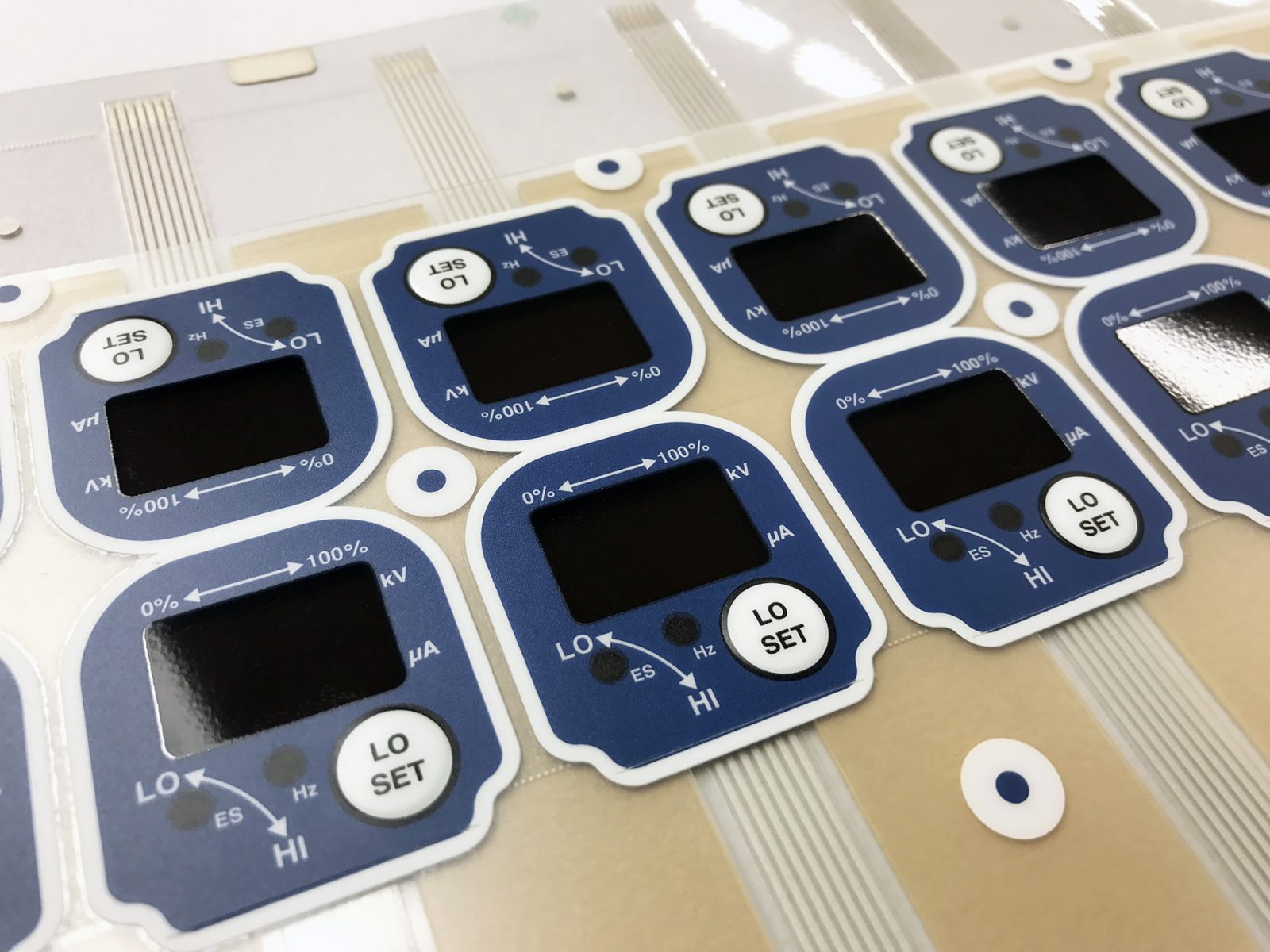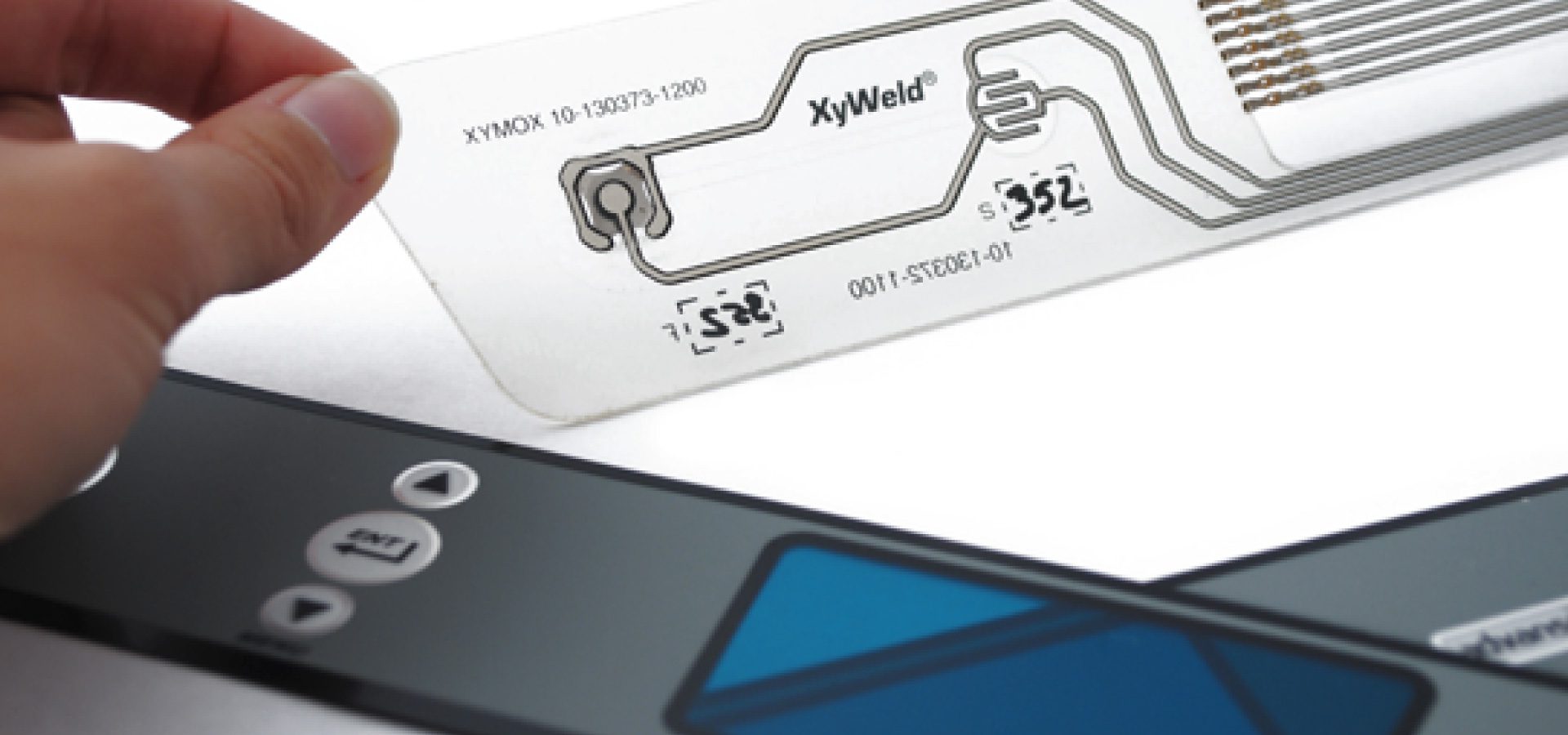Membrane Switches Explained: A Comprehensive Overview to Their Benefits
Membrane layer switches represent a advanced and functional solution for creating customer interfaces across a variety of markets. Their multilayered style not only makes certain capability with simple stress yet additionally provides considerable benefits, such as resilience and modification. As sectors increasingly seek reliable and reliable control interfaces, understanding the certain benefits and applications of membrane switches over comes to be necessary. The ins and outs of their style and execution present special difficulties that quality better assessment. What elements should be considered to completely leverage their capacity in contemporary applications?
What Are Membrane Switches?

When pressure is applied to the membrane button, the layers make contact, completing an electric circuit. This simple device permits a variety of applications, from consumer electronic devices to industrial machinery. Membrane buttons are commonly made to be resistant and waterproof to dirt and impurities, making them ideal for settings where durability is crucial.
Furthermore, the adaptability of the products utilized in membrane switches over helps with cutting-edge layouts that can conform to various shapes and measurements. This flexibility adds to their popularity in diverse fields, consisting of medical gadgets, auto controls, and home appliances. Overall, membrane layer switches over represent a vital aspect in modern-day user interface innovation, connecting the void between users and digital systems.
Secret Benefits of Membrane Buttons
Among the myriad of interface alternatives offered, membrane layer switches over stand apart for their one-of-a-kind combination of advantages. One of the key advantages is their compact and light-weight style, which permits combination into a large range of devices without including considerable bulk. This is specifically helpful in applications where area is limited.
Furthermore, membrane switches over deal sturdiness and resistance to environmental variables. They are commonly built with materials that can stand up to dampness, dust, and various chemicals, making them suitable for rough conditions. This sturdiness adds to a much longer lifespan compared to typical mechanical switches.
An additional considerable benefit is the adaptability in customization. Membrane layer buttons can be printed with different graphics, shades, and structures, enabling customized designs that satisfy specific branding or practical needs. This flexibility includes the variety of layers and circuit options, supplying designers with multiple setups.
In addition, the tactile comments provided by some membrane changes enhances customer experience, making them more user-friendly to run. Lastly, the simplicity of cleansing and upkeep further solidifies membrane layer switches as a useful selection in both consumer and commercial applications. Membrane Switches. In general, these crucial benefits make them a recommended solution for numerous designers and producers
Applications in Different Industries
Just how do membrane layer switches find their place across diverse industries? Their convenience and capability make them integral parts in sectors ranging from healthcare to consumer electronics. In image source clinical tools, membrane layer buttons are utilized for their ease of cleaning and resistance to contamination, making sure hygiene in atmospheres where sterility is critical.
In the customer electronic devices market, these switches provide streamlined, straightforward user interfaces that improve product looks while preserving durability against damage. Automotive applications gain from membrane layer switches over too, where they are made use of in control panels and control panels, offering trusted efficiency in tough problems.
Furthermore, industrial equipment utilizes membrane switches for control board as a result of their toughness, ability to hold up against extreme settings, and personalized styles that provide to certain operational requirements. The food industry leverages membrane layer switches for their ease of usage and resistance to spills, guaranteeing operational efficiency in busy settings.
Inevitably, the adaptability of membrane layer switches over across these varied applications highlights their important duty in modern technology, boosting user communication while meeting industry-specific needs. Their continued evolution assures additional assimilation into arising fields and innovative items.
Style and Personalization Options
The design and personalization options readily available for membrane switches are crucial for tailoring user interfaces to satisfy certain customer needs and visual choices. These buttons can be developed in different shapes, dimensions, and formats, permitting smooth assimilation into varied applications. The flexibility in style suggests that producers can produce one-of-a-kind interfaces that boost usability and keep brand identification.
Personalized graphics, appearances, and shades can be put on the surface of the membrane layer button, giving a chance for branding try this site and individual involvement. In addition, backlighting alternatives, such as LED lighting, can be included to improve exposure in low-light conditions, thus enhancing functionality.
Functional elements can likewise be personalized, including tactile feedback and actuation pressure, which can be adapted to suit various customer interactions. The selection of products, such as polyester or polycarbonate, permits variations in toughness and ecological resistance, catering to the particular demands of various sectors.
Eventually, the substantial layout and customization capabilities of membrane layer switches enable companies to create easy to use and visually enticing user interfaces, making sure that their items fulfill both practical and aesthetic needs properly. Membrane Switches.
Factors To Consider for Application
Implementing membrane layer changes requires cautious factor to consider of numerous factors to make certain ideal capability and user experience. Among the primary considerations is the designated application setting. Elements such as direct exposure to moisture, severe temperature levels, and chemical substances can substantially impact the switch's efficiency and long life. Selecting products that withstand these conditions is vital.

Another essential element is the switch's style and design. Making sure that the tactile feedback and actuation force align with user assumptions boosts use. Performing user testing can provide important understandings into the ideal design.
Additionally, compatibility with electronic parts have to be assessed. The button's wiring must line up with the overall system architecture, guaranteeing reputable signal transmission and reducing interference.
Moreover, production techniques and costs should be reviewed. The option between custom designs and standard versions can lead and affect both spending plan time.
Lastly, consider repair and maintenance. Membrane switches might call for details cleaning and care procedures to preserve their look and functionality with time. By addressing these factors to consider, companies can implement membrane switches Check This Out that satisfy their functional demands while providing a favorable individual experience.

Final Thought
In conclusion, membrane switches over represent a functional and durable control user interface ideal for a wide variety of applications throughout numerous sectors. Membrane Switches. As technology continues to progress, the relevance of membrane layer buttons in modern-day tools continues to be significant, offering both performance and visual appeal.
Membrane changes represent a advanced and functional service for creating user interfaces across a variety of fields.Comprehending the essential elements of contemporary electronic interfaces, membrane buttons are a kind of individual interface gadget that consist of flexible, thin layers of material. Generally, membrane switches represent a vital aspect in contemporary customer interface modern technology, linking the space between users and electronic systems.
Amongst the myriad of user interface options available, membrane layer switches over stand out for their special combination of advantages.The design and customization options readily available for membrane layer switches are crucial for tailoring user interfaces to fulfill particular user demands and visual preferences.
Comments on “Learn more about the Ecological Advantages of Using Membrane Switches in Electronic Devices”